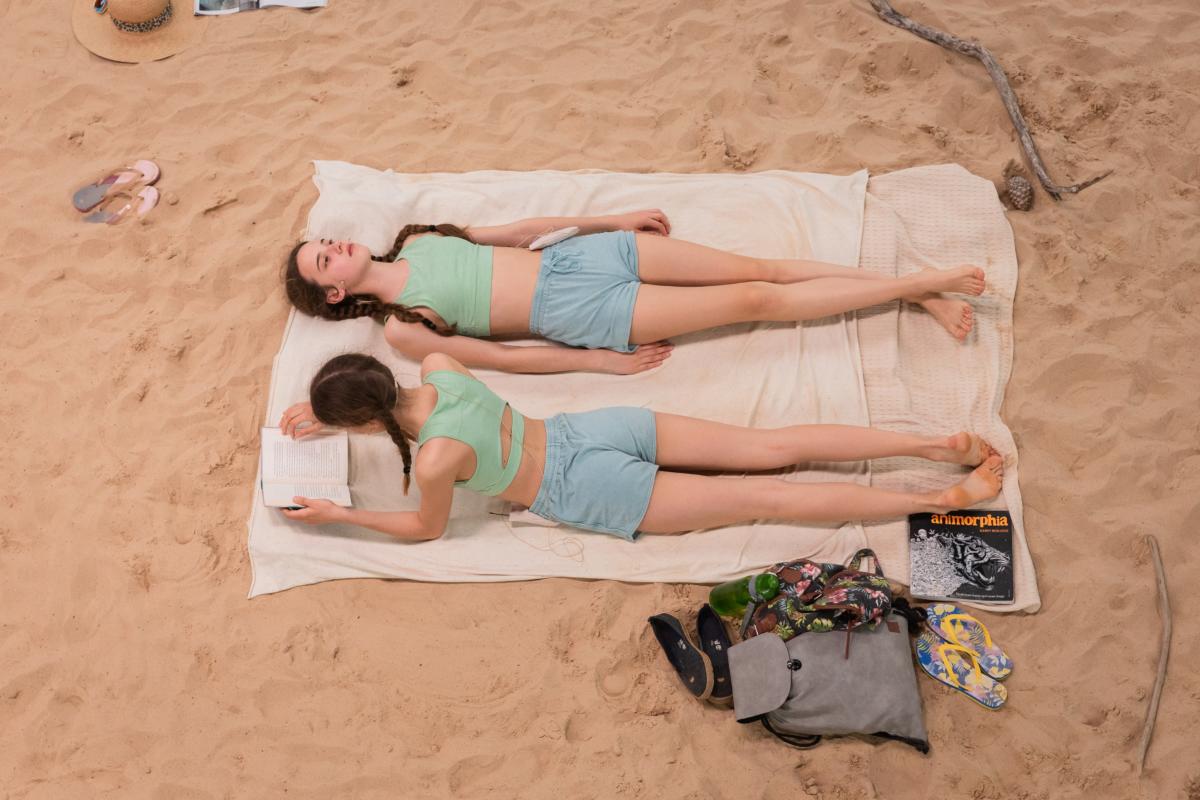
Lithuania
Lina Lapelyte, Vaiva Grainyte and Rugile Barzdziukaite, Sun & Sea (Marina)
‘With a bird’s-eye view of the performance from a mezzanine gallery above the stage, audiences look down on the assembled characters who appear as a typical group of holiday-goers, of varying ages, from different walks of life, attired in colourful bathing suits and sunbathing under the full glare of the sun over a mosaic of towels. Surveying this fleshy tableau vivant from their sun-like vantage point, audiences observe the frailty of the human condition. As the libretto unfolds we are introduced to each individual in turn, through sung performances (performed whilst lying down) that reveal private preoccupations, ranging from trivial concerns about sunburn and plans for future vacations to nagging fears of environmental catastrophe, which surface as though from the depths of the characters’ troubled consciousness. Frivolous micro-stories on this crowded beach give way to broader, more serious topics and grow into a global symphony, a universal human choir addressing planetary scale issues; tired bodies offering a metonym for a tired planet.’
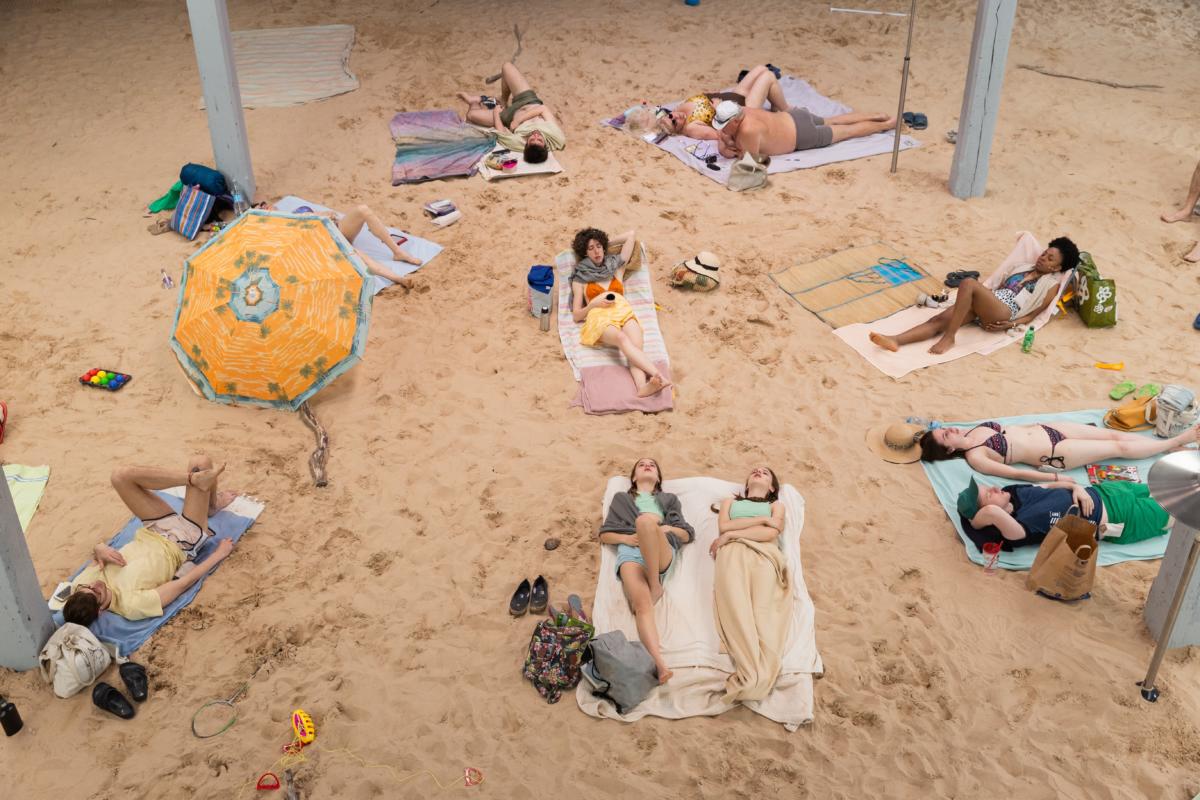

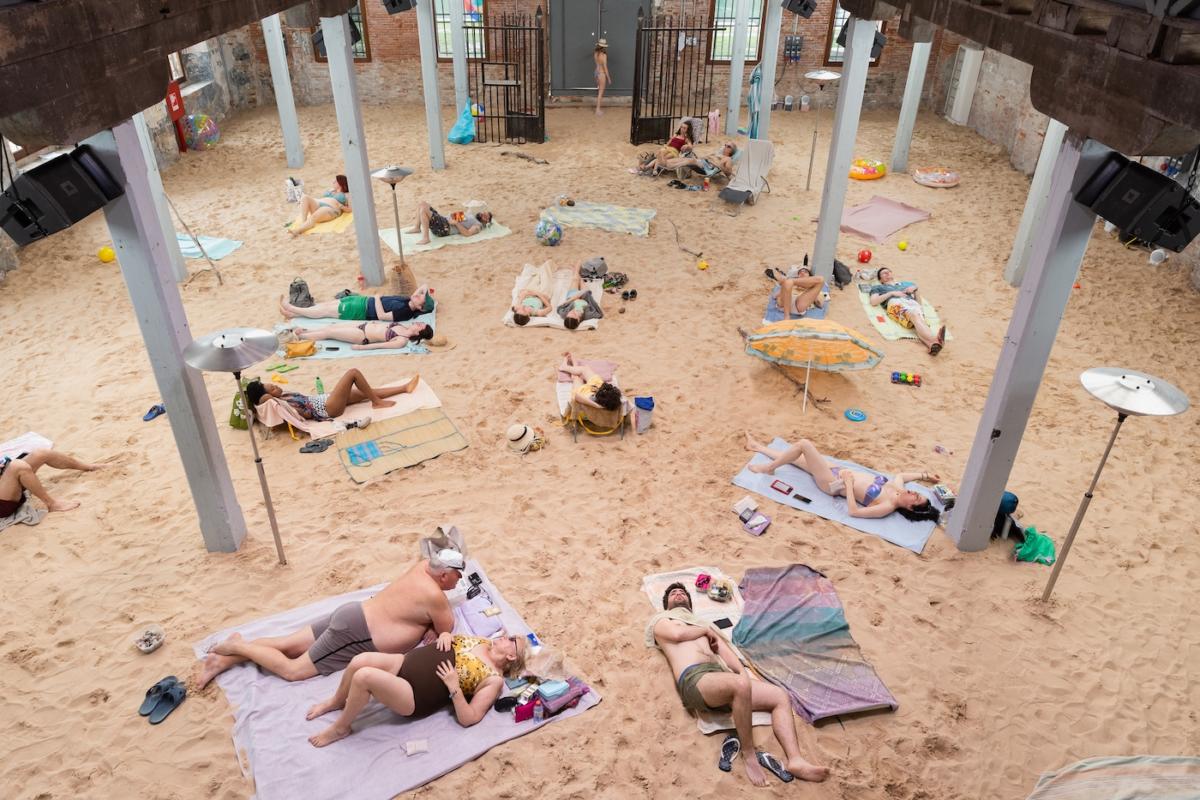
Latvia
Daiga Grantiņa, Saules Suns
In her practice, Daiga Grantina uses a wide range of everyday materials, from the synthetic to the organic, often inverting and trespassing beyond the limits of their traditional uses to create associative formations that both conceal and reveal, directing the viewer’s gaze in manifold ways. The sources of inspiration for this new installation were light and simultaneity. Saules Suns is a multicentred landscape that unfolds around several suns, several sources of light traversing manifold materials and shapes. As if the scene of some cosmological dawn, it opens itself up as a site and moment for the generation of possibilities. Our sense of these possibilities is strengthened by the multitude of potential paths and perspectives through the installation.


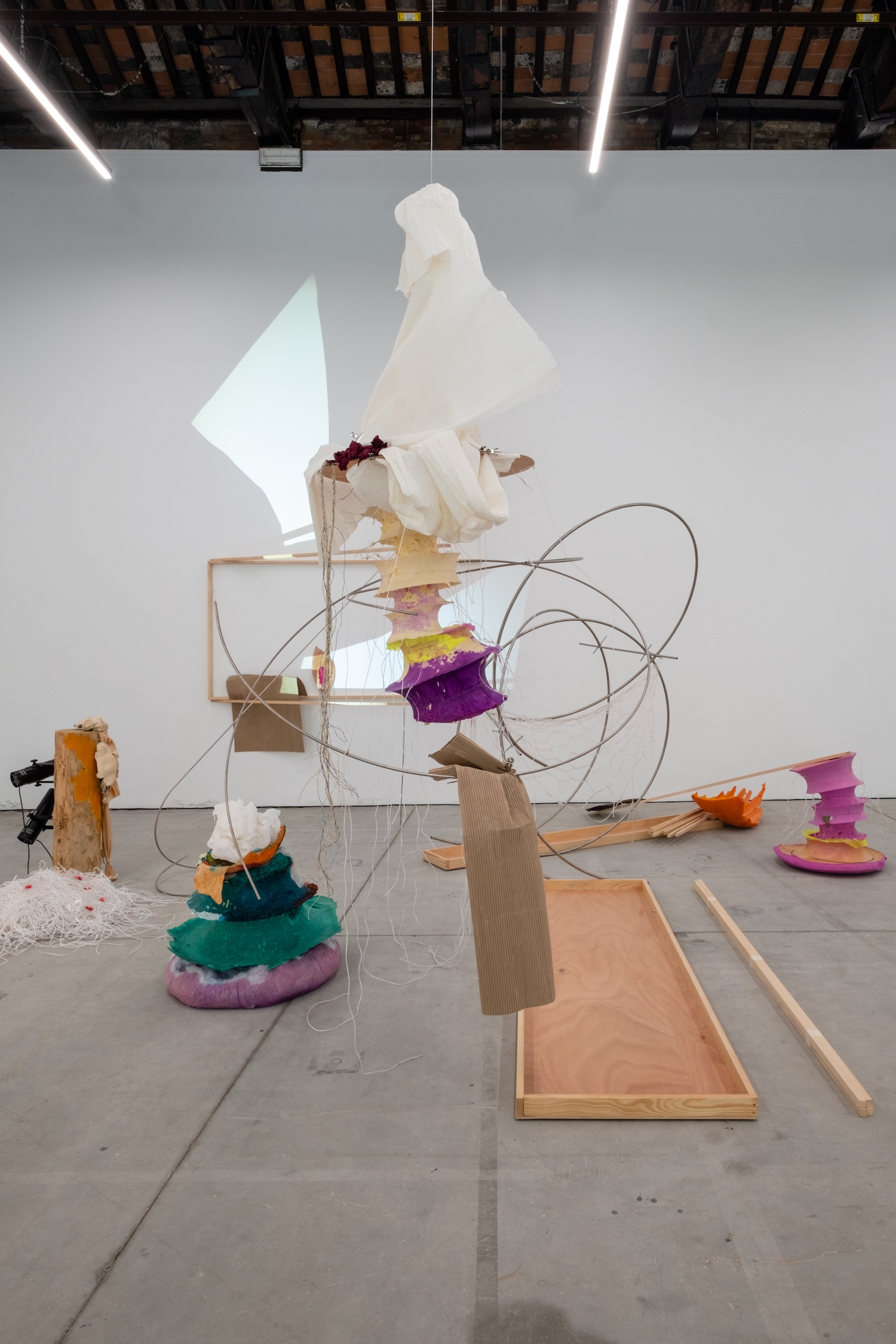
Serbia
Djordje Ozbolt, Regaining Memory Loss
‘Djordje Ozbolt presents new paintings and sculptures that address personal and collective memory. The pavilion is transformed by a new wall painting by the artist, which serves as an imaginary landscape on top of which more paintings are hung. Ozbolt views these works as windows, or portals, open onto symbolic and illusory visions of the past. Through the artist’s signature use of bright, saturated colour, the canvases and wall paintings clash and fight against each other, for a sort of performed, unreliable history. The sculptures and paintings are configured to face each other, each reflecting to the other the layering of selective fragments of memory. The works in themselves are interpretations, a subjective view of the past from the perspective of the present moment. Ozbolt questions the role of the artwork in distilling the truth: in its imagined unreality, the works reveal their memory to be false, however as artistic representation, they are true.’
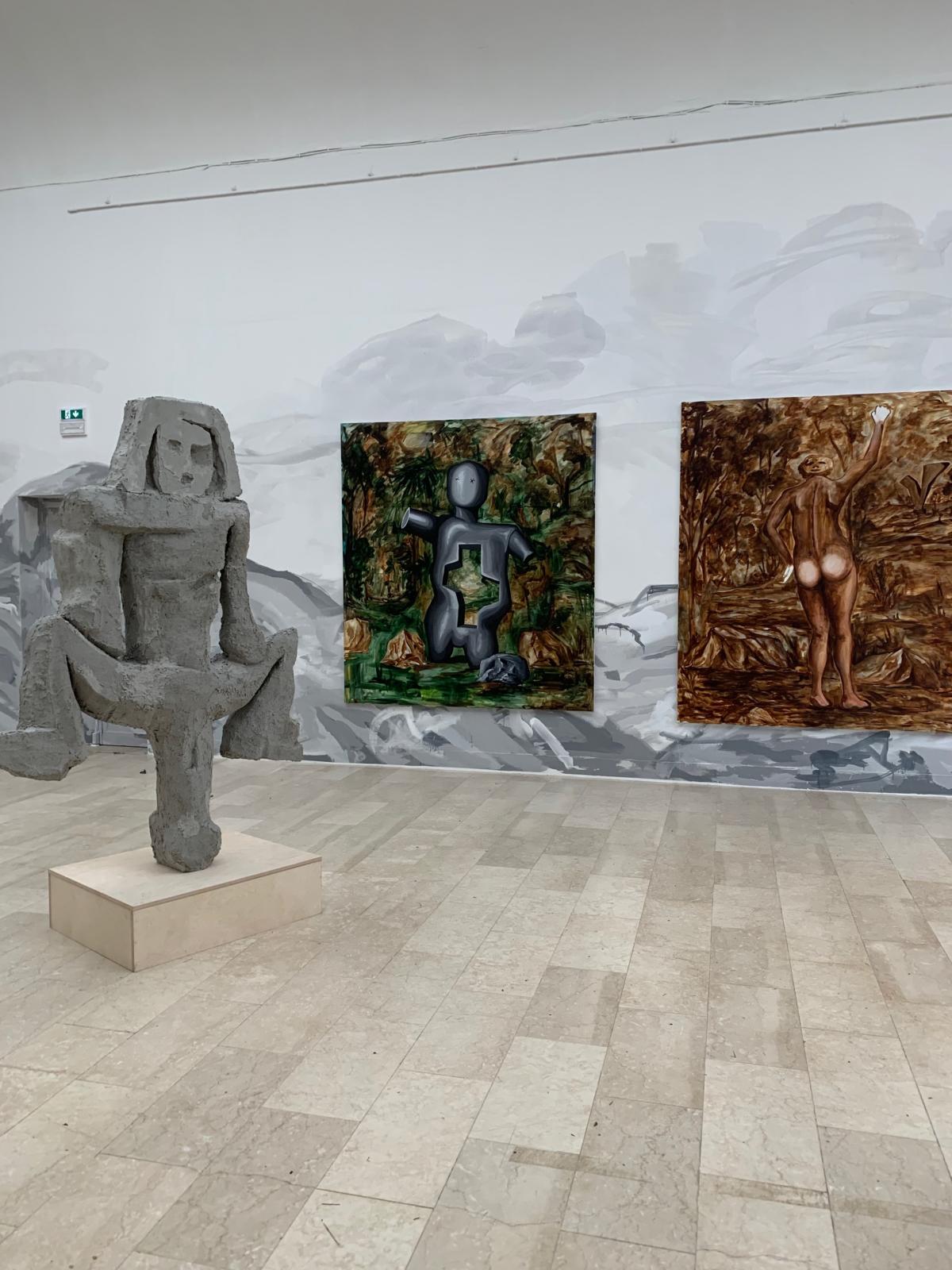


Georgia
Anna K.E, REARMIRRORVIEW, Simulation is Simulation, is Simulation, is Simulation
‘Anna K.E. has conceived a new architectural environment and video installation for the Georgia Pavilion. Equal parts public stage, ascending and descending tribunal platform, communal fountain, and sculptural object of observation, her structure recalls a matrix of digital pixels, transporting viewers into an environment that recalls a sleek synthetic model. Interspersed throughout are a compendium of K.E.’s videos and steel faucet-like sculptures, which circulate water, and are based on the original Georgian alphabet. Her videos often feature her own body as protagonist – restricted, contorted, or isolated – often pointing toward an evolving interdependency between our corporeal and digital selves.’
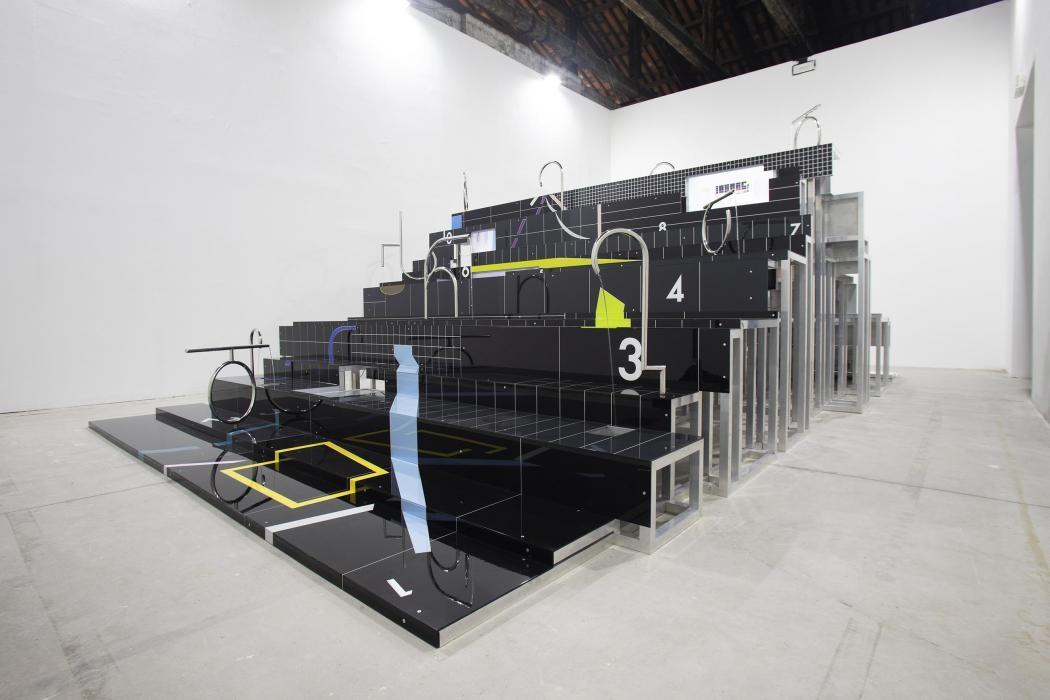

Romania
Belu-Simion Făinaru, Dan Mihălțianu, Miklós Onucsán, Unfinished Conversations on the Weight of Absence
‘Unfinished Conversations on the Weight of Absence focuses on three individual art projects conceived by artists belonging to the ‘1980s generation’ in Romania: Belu Simion Făinaru, Dan Mihălțianu and Miklós Onucsán, who often emphasised the processual, conceptual, and dialogical qualities of art. These installations are contemporary versions of historically significant art projects, which resume and evoke nomadic artistic trajectories. Through the conjunction of experimental documentary pieces and poetic heterotopic spaces, which suspend, displace, or disperse the notion of locality, the selected pieces disruptively approach the notion of national representation by revealing absences fissuring its core.’
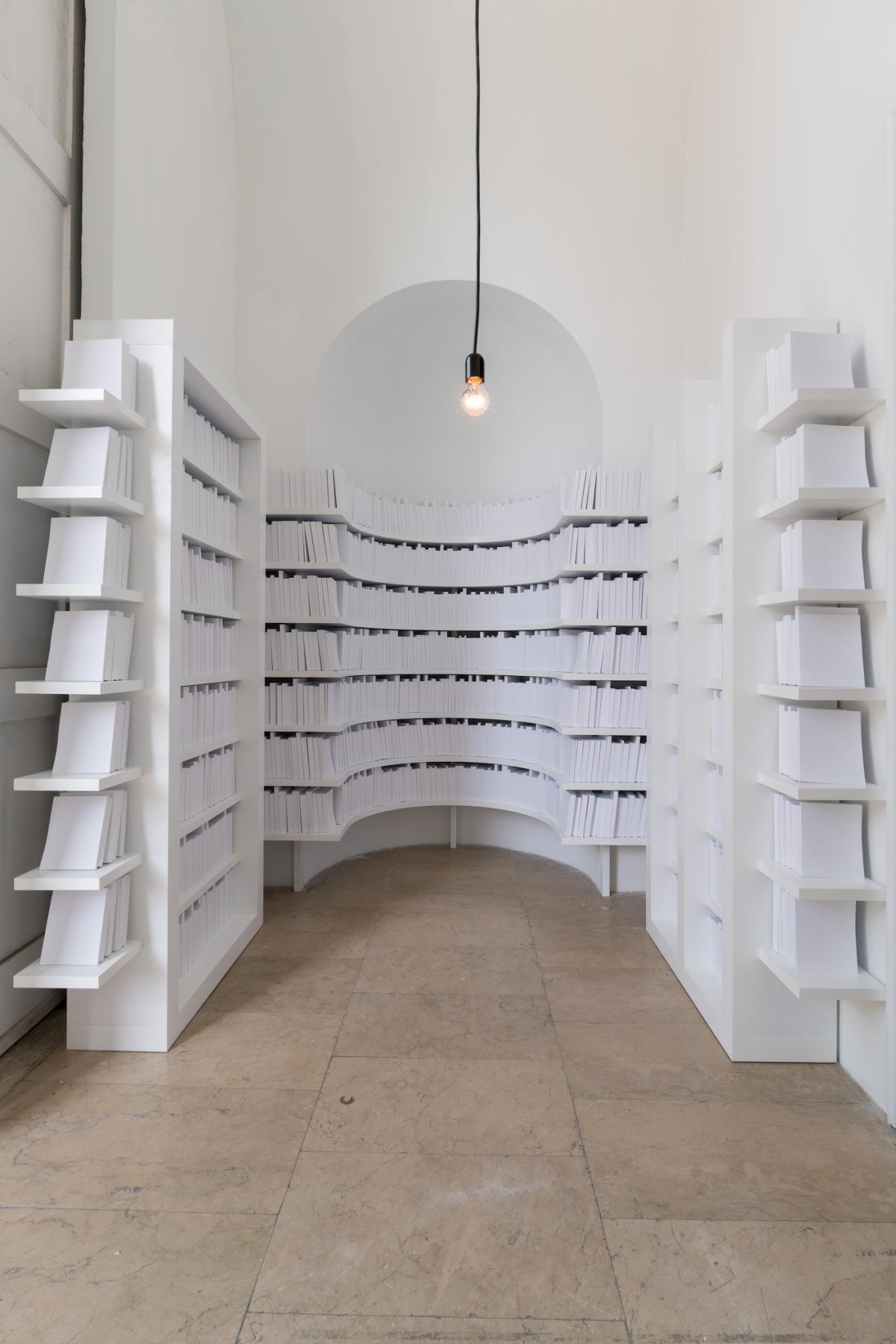


Poland
Roman Stańczak, Flight
‘Flight is Roman Stańczak’s extraordinary Surrealist sculpture: an inside-out luxury private aircraft. It manifests the strategy the artist has applied since his debut in the 1990s. His works, emerging from the margins of the then-nascent Polish Critical art, relied on the deformation of objects, turning them inside out or removing their external layer to launch a game with the meanings attributed to them. Flight is a monument to the paradoxes of modernity and a commentary on Polish capitalist transformation. The inside-out private aircraft used by the so-called 1%, the rich élite, is a metaphor for the reverse of the modernisation processes, a commentary on inequalities, problems with redistribution, resentment, and populism.’
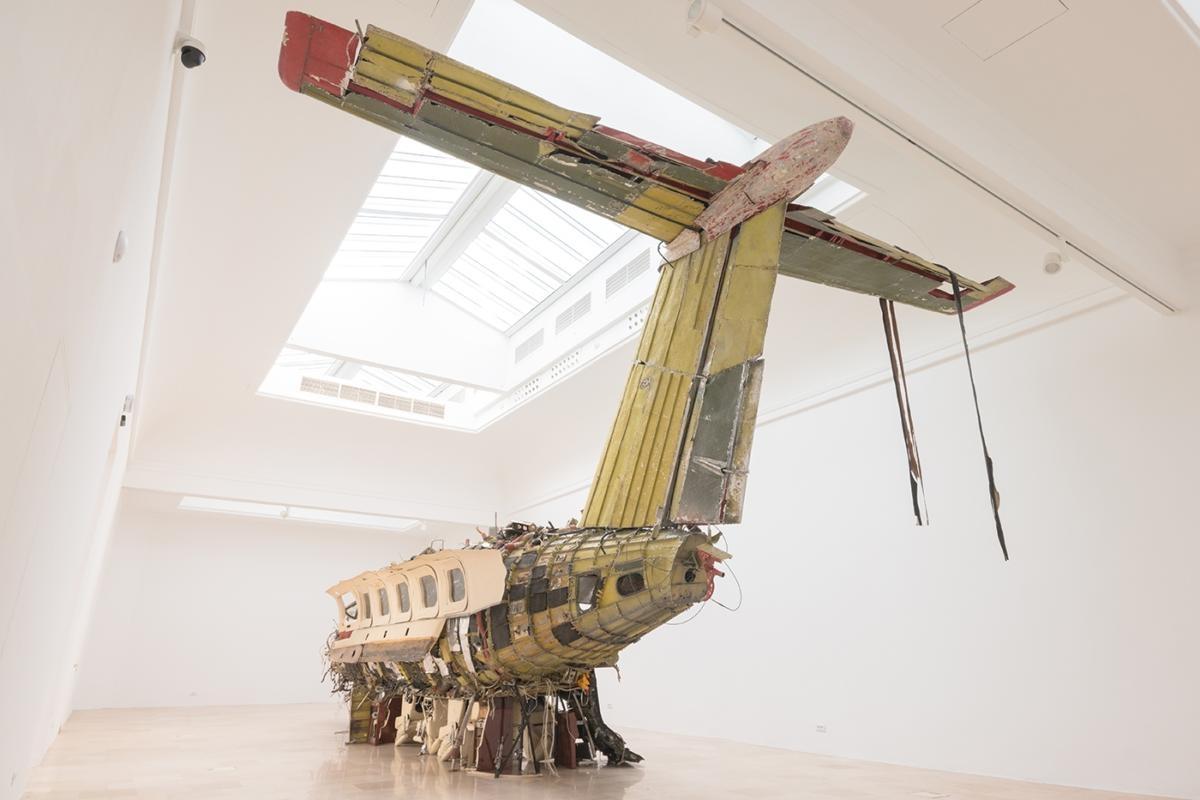
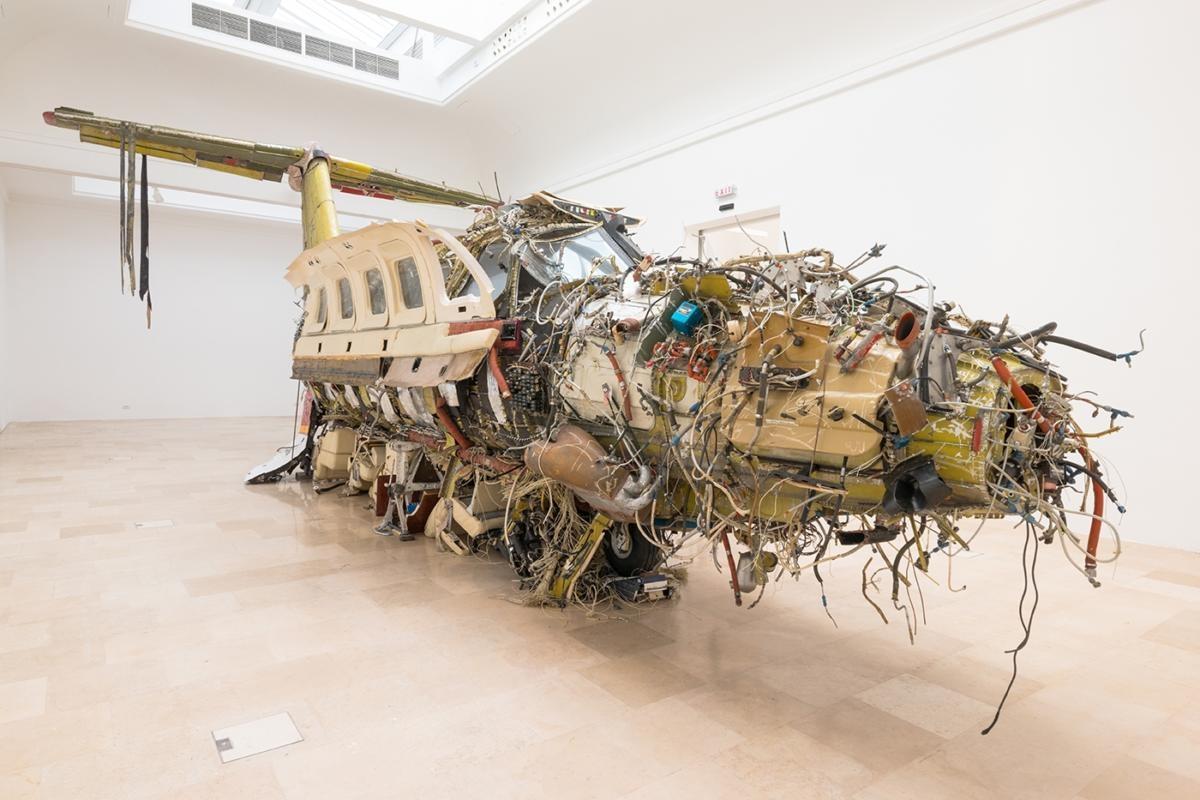
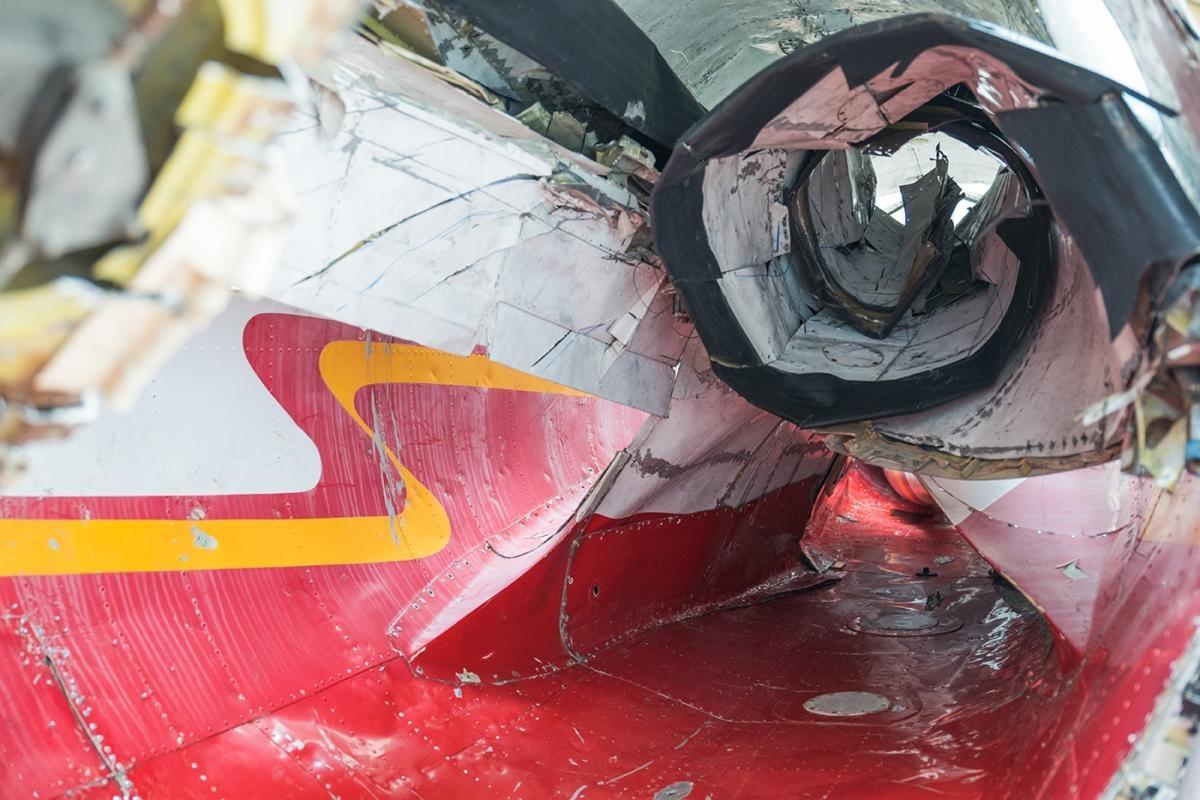
Ukraine
Open Group (Yurii Biley, Pavlo Kovach, Stanislav Turina, Anton Varga), The Shadow of Dream cast upon Giardini della Biennale
‘At noon on May 9, the world’s largest cargo aircraft, the Antonov An-225 Mriya, flies over Venice and casts a fleeting shadow over the Giardini della Biennale. The aircraft carries information about all Ukrainian artists, a digital directory that consists of living dreams, present or past, explicit or obscure, verbalised or even unconscious. Although personal beliefs, politics, historical circumstances or quotidian conditions may have placed them outside the context of global contemporary art, their flight at the Biennale Arte 2019 reasserts their history and reminds us to consider the shape and contents of shadows that fall across the Biennale.’
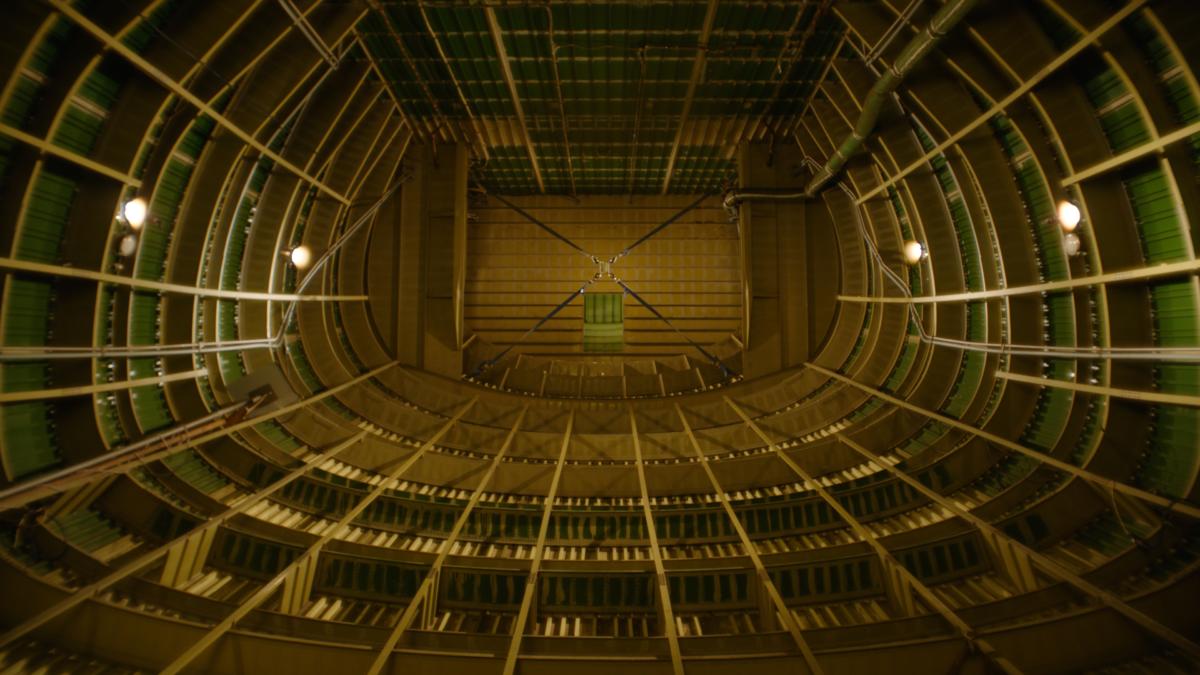

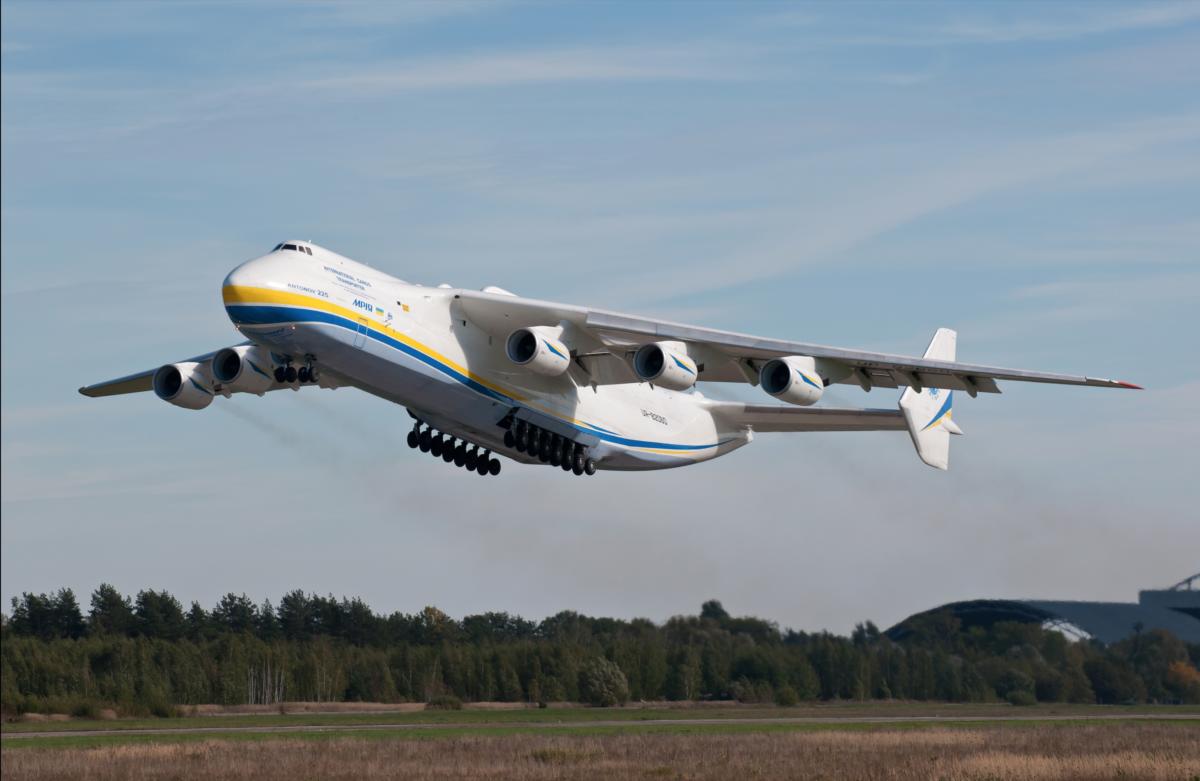
Imprint
| Index |
